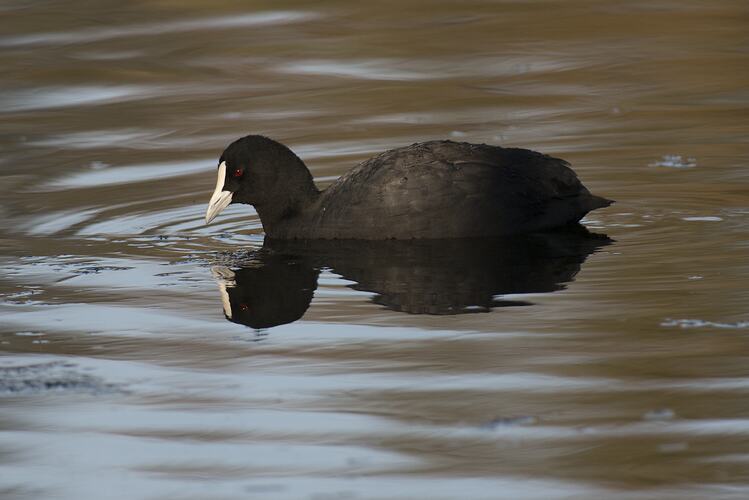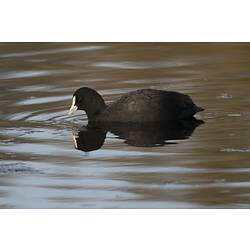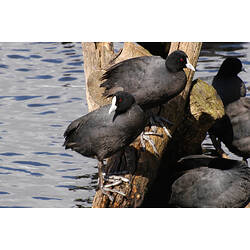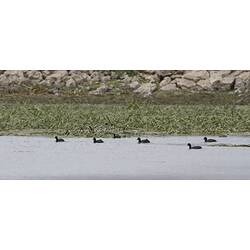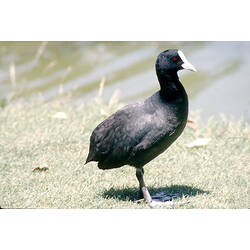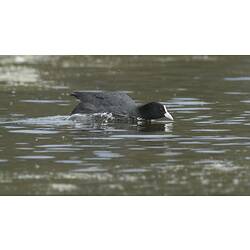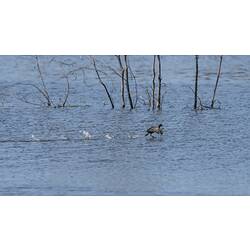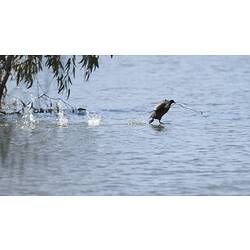General Description
A dark grey-black body, white bill and forehead and a bright red eye. Toes have lobes to assist with swimming. Chicks have black downy feathers with yellow tips and an orange-red head. Bill to tail length is up to 40 cm. Eurasian Coots look quite similar to Dusky Moorhens, Gallinula tenebrosa, with which they are quite often found. Dusky Moorhens have a red and yellow bill and head shield.
Biology
Eurasian Coots feed mainly on aquatic vegetation that they dive underwater to find. They can completely squeeze the air out from between their feathers, enabling them to dive for up to 15 seconds and to depths of 7 m. Coots also graze in pastures or lawns near the water, and they occassioanlly supplement their diet with worms, insects and fish. They make floating nests of vegetation but also steal nests from other birds, even pushing the other birds' eggs out. The female lays up to ten eggs at a time, which both parents incubate. Rather than having a strict breeding season, coots will breed whenever conditions are favourable and may produce multiple clutches through the year. Breeding pairs will aggressively defend their territories. Coots are reluctant flyers, running across the water to take off.
Distribution
Worldwide. Self-introduced to New Zealand. Mainland Australia and Tasmania.
Habitat
Freshwater wetlands, swamps, lagoons and ornamental ponds.
More Information
-
Animal Type
-
Animal SubType
-
Brief Id
A black waterbird with a white bill and head shield. Usually found on or next to water.
-
Colours
Black, White
-
Maximum Size
40 cm
-
Habitats
-
Diet
Herbivore
-
Endemicity
-
Commercial
No
-
Conservation Statuses
CITES: Not listed, FFG Threatened List: Not listed, EPBC Act 1999: Not listed, IUCN Red List: Least Concern
-
Taxon Name
-
Common Name
Eurasian Coot
-
Kingdom
-
Phylum
-
Subphylum
-
Class
-
Order
-
Family
-
Genus
-
Species Name
atra
